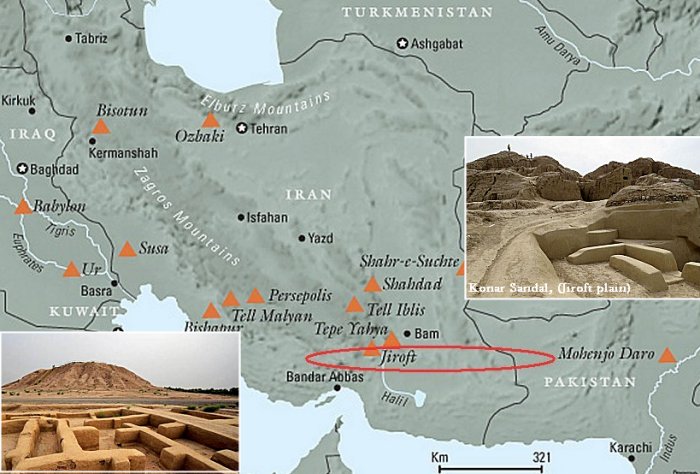Jiroft’s Konar Sandal – Home To A Huge Ziggurat And Many Ancient Treasures
Angela Sutherland - AncientPages.com - More than a hundred historical sites are recognized in the basin of a 400 kilometer stretch of Halil-Rud River in the south of Kerman province, a historically and archaeologically significant region of Iran.
Among these places of a high cultural value, Konar Sandal is a Bronze Age archaeological site situated just south of Jiroft, Kermān Province, Iran. The Konar Sandal has many treasures, which we mention later in this article. First of all, the site has a ziggurat-like structure. It is today known as the Konar Sandal Ziggurat.
Before the discovery of the ziggurat in 2002, Chogha Zanbil, a significant leftover of the Elamite civilization near Susa, was the only surviving ziggurat in Iran. Built about 1250 BC during the Middle Elamite Period (c. 1500 – c. 1100 BC) by king Untash-Napirisha, to honor Sumerian god Inshushinak, Chogha Zanbil ziggurat has long remained the only still existing structure of this type
Yusef Majidzadeh, the director of the archaeological team working at the site, led excavations in the region for more than two decades. He said that the central part of the Konar Sandal Ziggurat is the lower part and is 200 years older than the upper section. Thus, the construction of the ziggurat was carried out in stages beginning in 2200 BC, and now, archaeologists have determined the original shape of the Konar Sandal Ziggurat. It will make the restoration of the ziggurat much easier.
Stone vessel, architectural decoration, Jiroft, Kerman, Iran. Image source
Two superimposed platforms are located on the mound of Konar Sandal North. The upper structure measures 150 x 150 m, and the lower 300 x 300 m. These measurements help us imagine that this gigantic ziggurat covered almost the whole mound and was constructed of more than four million mud bricks. There are still questions regarding the Konar Sandal Ziggurat, and particularly, the large platforms that form a stepped massif and resemble the ziggurats of Mesopotamia.
Also interesting, although not precisely explained, is a two-story citadel with a base covering approximately 13.5 hectares (33 acres) and surrounded by a fortress wall, which is 10.5 meters (34′) thick. While the ziggurat is a pyramid-like structure consisting of tiered platforms, a citadel, on the other hand, suggests a fortified building.
Jiroft - with more than a hundred historical sites - has ruins and artifacts dating back to the third millennium BC. Both Yusef Majidzadeh many other experts from Iran and abroad consider that the archaeological findings in Jiroft shed light on the so-called “Jiroft civilization” that existed between Mesopotamia and Indus valley and dated back to 3000 BC. They believe that Jiroft was the ancient city of Aratta, described as a great civilization in a Sumerian clay inscription.
Probably, it was an independent Bronze Age civilization with its own architecture and language, and the ruins may be the remains of the lost Aratta Kingdom.
Konar Sandal artifacts. source
However, the exact location of this civilization is unclear. Some scholars believe that Aratta was situated in Jiroft, but others suggest the kingdom was located in Azerbaijan, Baluchistan, or even the Gulf.
A New Writing System Discovered At The Site Of Konar Sandal
A few years ago, a new writing system probably dated to the second half of 3000 BC was unearthed at the site of Konar Sandal.
Three of them represent a Linear Elamite inscription and a second inscription with unknown signs dubbed as ‘Geometric.’ The fourth tablet remains enigmatic. However, according to scientists, the analyzed geometric signs dated to 3000 BC suggest that they may be musical scores.
In our article “Is Mysterious Prehistoric Jiroft The Legendary Land Of Aratta? we write that “many valuable objects, including two clay inscriptions carrying the oldest human scripts, have been unearthed during authorized excavations in the region.
Numerous fascinating artifacts unearthed at the site are of great value. There are two remarkable stone reliefs unearthed in the Konar Sandal. They are carved on soapstones and depict two men with human faces and snake bodies instead of legs.
Still, not much is known about this region of Iran. Excavations carried out from 2006 to 2009 revealed the remains of three settlements dated to 4000 BC. Even more, artworks were unearthed in 2014, and these finds attest that the ancient people of this region had not one but several writing systems.
Written by – A. Sutherland - AncientPages.com Senior Staff Writer
Copyright © AncientPages.com All rights reserved. This material may not be published, broadcast, rewritten or redistributed in whole or part without the express written permission of AncientPages.com
Expand for referencesReferences:
More From Ancient Pages
-
 DNA Of 10,000-Year-Old Luzio Solves The Mysterious Disappearance Of The Sambaqui Builders
Archaeology | Jul 31, 2023
DNA Of 10,000-Year-Old Luzio Solves The Mysterious Disappearance Of The Sambaqui Builders
Archaeology | Jul 31, 2023 -
 Secrets Of Ancient Skeletons Found In York – Who Were They And Where Did They Come From?
Archaeology | Jan 20, 2016
Secrets Of Ancient Skeletons Found In York – Who Were They And Where Did They Come From?
Archaeology | Jan 20, 2016 -
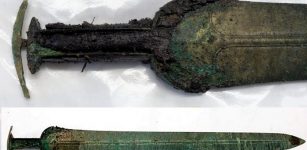 A 1.3 kg Heavy Bronze Sword Unearthed On Funen Island, Denmark
Archaeology | Mar 16, 2021
A 1.3 kg Heavy Bronze Sword Unearthed On Funen Island, Denmark
Archaeology | Mar 16, 2021 -
 New Discoveries In the Valley Of The Monkeys In Luxor, Egypt
Archaeology | Oct 11, 2019
New Discoveries In the Valley Of The Monkeys In Luxor, Egypt
Archaeology | Oct 11, 2019 -
 Altai Mountains Were Home To Porcupines 30,000 Years Ago
Archaeology | Mar 14, 2017
Altai Mountains Were Home To Porcupines 30,000 Years Ago
Archaeology | Mar 14, 2017 -
 Norse Religion Was Different Than Previously Thought – New Study Reveals
Archaeology | Feb 27, 2021
Norse Religion Was Different Than Previously Thought – New Study Reveals
Archaeology | Feb 27, 2021 -
 Camas Plant Stewardship In The Pacific Northwest Dates Back More Than 3,500 Years
Archaeology | May 23, 2024
Camas Plant Stewardship In The Pacific Northwest Dates Back More Than 3,500 Years
Archaeology | May 23, 2024 -
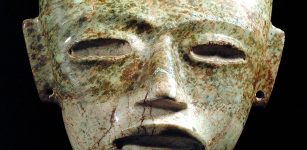 Epi-Olmec: Undeciphered Isthmian Script Of Mesoamerica
Artifacts | Mar 13, 2016
Epi-Olmec: Undeciphered Isthmian Script Of Mesoamerica
Artifacts | Mar 13, 2016 -
 Sutton Hoo Burials May Belong To Anglo-Saxons Who Fought For The Byzantine Empire – Professor Suggests
Archaeology | Jan 10, 2025
Sutton Hoo Burials May Belong To Anglo-Saxons Who Fought For The Byzantine Empire – Professor Suggests
Archaeology | Jan 10, 2025 -
 Ancient Mesopotamian City Lagash Reveals More Archaeological Secrets
Archaeology | Jan 25, 2023
Ancient Mesopotamian City Lagash Reveals More Archaeological Secrets
Archaeology | Jan 25, 2023 -
 On This Day In History: Johannes Kepler ‘Father Of Modern Astronomy’ Was Born – On Dec 27, 1571
News | Dec 27, 2016
On This Day In History: Johannes Kepler ‘Father Of Modern Astronomy’ Was Born – On Dec 27, 1571
News | Dec 27, 2016 -
 Pax Mongolica: Time Of Peace And Stability That Helped To Spread Technologies And Inventions
Ancient History Facts | Mar 28, 2016
Pax Mongolica: Time Of Peace And Stability That Helped To Spread Technologies And Inventions
Ancient History Facts | Mar 28, 2016 -
 Emperor Caligula’s Ancient Garden Found Under Piazza Pia In Rome, Italy
Archaeology | Jul 26, 2024
Emperor Caligula’s Ancient Garden Found Under Piazza Pia In Rome, Italy
Archaeology | Jul 26, 2024 -
 Biblical City In Zanoah Offers Archaeological Evidence Of Moses’ Journey To The Promised Land
Archaeology | Jul 18, 2024
Biblical City In Zanoah Offers Archaeological Evidence Of Moses’ Journey To The Promised Land
Archaeology | Jul 18, 2024 -
 Mysterious Enormous Underground Labyrinth Of Egypt Holds Secrets Kept From The Outside World
Featured Stories | May 29, 2014
Mysterious Enormous Underground Labyrinth Of Egypt Holds Secrets Kept From The Outside World
Featured Stories | May 29, 2014 -
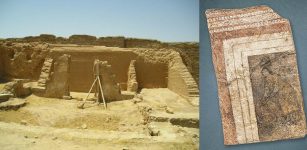 Has World’s Oldest Image Of Virgin Mary Been Discovered In Dura-Europos Church?
Archaeology | Mar 17, 2017
Has World’s Oldest Image Of Virgin Mary Been Discovered In Dura-Europos Church?
Archaeology | Mar 17, 2017 -
 Lost Kingdom Of Cleopatra – Legendary Lost City Of Heracleion
Featured Stories | Apr 1, 2014
Lost Kingdom Of Cleopatra – Legendary Lost City Of Heracleion
Featured Stories | Apr 1, 2014 -
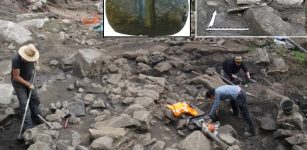 6,000-Year-Old Vast Settlement With Tools And Granite Structures Unearthed In Sotta, Corsica In France
Archaeology | May 16, 2023
6,000-Year-Old Vast Settlement With Tools And Granite Structures Unearthed In Sotta, Corsica In France
Archaeology | May 16, 2023 -
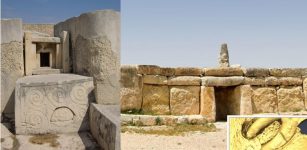 First People To Inhabit Malta Arrived 700 Years Earlier Than Previously Thought
Archaeology | Mar 20, 2018
First People To Inhabit Malta Arrived 700 Years Earlier Than Previously Thought
Archaeology | Mar 20, 2018 -
 Controversial Tunnel Plan Near Stonehenge Gets U.K. Government Approval – Shocked And Angry Opponents Will Challenge The Decision In High Court
News | Nov 13, 2020
Controversial Tunnel Plan Near Stonehenge Gets U.K. Government Approval – Shocked And Angry Opponents Will Challenge The Decision In High Court
News | Nov 13, 2020

